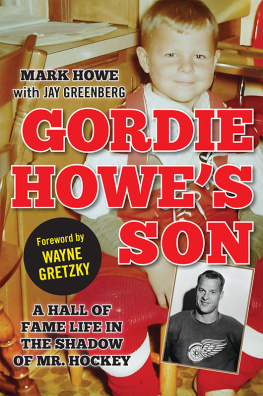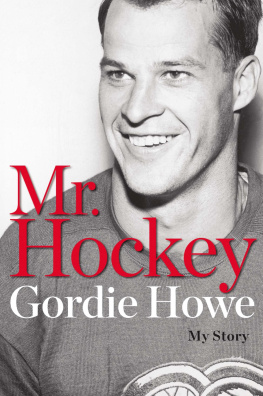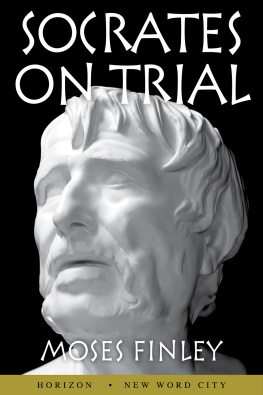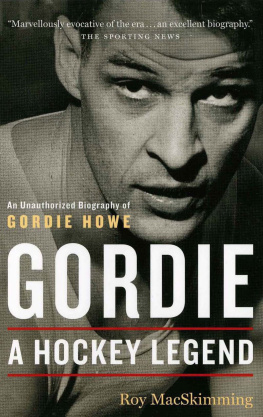Foreword by Gordie Howe
A friendshipand Howe
I have had the privilege of knowing Dr. Jack Finley as a friend, and as my personal physician, for more than 50 years. From a players point of view, he was a hero. He was our guardian angel, stitching our gashes, casting our breaks, draining our infections, straightening our spines, and easing our pain enough for us to be able to rejoin the battle. He was our psychologist and confidant, helping us navigate the demands of being fathers, husbands, and sports figures.
But Dr. Finley has been much more than that to the Howe family. We have been fortunate to be good friends with the Finleys for more than six decades. Colleen, Genevieve, Jack, and I enjoyed many great evenings together, long before the kids came along. It is a rare friendship, the kind where you know that the answer will be yes, no matter what the question.
We have watched the Finley children grow from infants into successful young adults in their own right. In turn, the Finleys have been there to share in the joys of our family, including birthdays, family vacations, Peewee hockey tournaments, Christmas parties, you name it. Jack and Genevieves son, Michael, hit it off with our son, Murray, skating together at Howe Hockey School, and later as teammates. Doc Finleys love for his craft no doubt had an influence on both Michael and Murray pursuing medical careers.
The stories Jack shares in this book are more than just sports stories. They are a very personal testament to the powerful bonds forged between players, management, fansand all of our families. We all needed each other, and still do. I am honored to have been part of this book; it is a tribute to the wonderful career of a brilliant, caring physician and friend.
Gordie Howe
Mr. Hockey
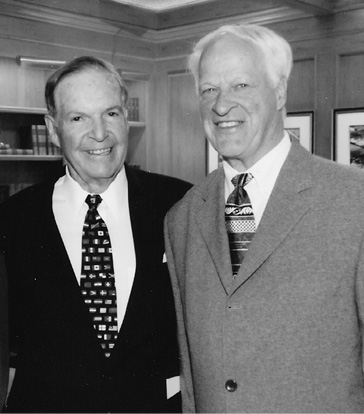
Standing to my left in 2003 is one of the most remarkable, toughest, and humble athletes of the century, Gordie Howe. (Photo courtesy of the Finleys)
6. A Major-League Problem
Drugs and other performance-enhancing substances.
All professional sports have to be on guard for players deviating from the traditional standards of honesty and fair play, particularly related to the danger of using prohibited substances or medications. The International Olympic Committee, for instance, has very strong rules and techniques to both regulate and randomly check players who earn the honor of representing their country in the competition to be sure they have not enhanced their performance by use of prohibited substances. This is specifically related to using prohibited classes of drugs, medications, or related substances.
Many such drugs and medications are perfectly legal, even found in over-the-counter (OTC) products, but nevertheless have small amounts of banned substances that could unwittingly disqualify an athlete and result in the loss of earned medals. Therefore my advice to any candidate for Olympic play was to just avoid taking anythingOTC or prescribed. For team physicians, it is not possible to prevent players from obtaining substances privately beyond the limits of the training room. Sometimes a trainer or team physician can become suspicious of that activity and randomly test the individual for both the player and teams benefit.
Professional football was confronted with the problem in players in the 1970s who found that by taking certain hormone-related substances they could bulk up and become stronger. Soon some of those players began to develop tumors in their livers or elsewhere, and some quickly jumped on the bandwagon to admit their mistake and promptly cautioned others not to repeat it. This did not seem important to hockey, but the NHL began to worry about the use of other substances that would speed up or enhance their ability to react quicker, have more endurance, or otherwise improve their performance.
In 1979, before team physicians had begun to meet, NHL President Clarence Campbell asked all the existing team doctors to gather during the leagues annual June meetings held that year in Buffalo. Although we talked about a number of issuespreseason physicals, blood work, cardiac evaluations, and more, league management was especially interested in the evolving sports-related drug problem.
Prior to the meeting, Don Murdoch, a talented young Rangers forward, was found to have prohibited drugs in his possession when going through customs. He was suspended on July 6, 1978, by the league for the entire 197879 season for a substance-abuse violation and put in a required rehabilitation program. The suspension was ultimately lifted after 40 games, but at that time it was the leagues best way of handling the situation.
As the NHLs position regarding drugs matured, a specific instructional program was born. The NHL started treating drug abuse as an illness and put in place a Substance Abuse and Behavioral Health Program led by Ph.D.s David Lewis and Brian Shaw. In addition to their instructional and advisory program, they were available at any time should anyone need counseling or emergency intervention. Considering the magnitude of the stress and danger a player in the NHL is exposed to, its easy to understand how easy it is to fall into the trap of using prohibited substances.
But even legal and properly helpful substances must be carefully monitored. For as long as I can remember, athletes in general and hockey players in particular have been interested in taking vitamins and minerals of various kinds. Their interest was to supplement their own diets in a healthy manner to minimize the many bruises, strains, and sprains that are a daily occurrence in professional hockey and make them heal faster once an injury occurs. Most players look to their trainers or team physicians for help in this area.
Back in the mid-1970s, a reporter from Sports Illustrated interviewed me in our office next to Detroit Osteopathic Hospital. He was interested in learning more about my interest and love of the game of hockey. He inquired about what we, as fans and team physicians, would do to enhance the care and performance of our players. I explained that the prime premise in our office was to be immediately available. When I first met Gordie Howe, he told me how our predecessors often kept them waiting for up to three hours to be seen for any medical problem. From that time on, I instructed our office personnel and the residents and support people at the hospital to alert us the minute a player came in for care. We had a system with the trainers to call ahead when they were sending a player to us.
Periodically, someone learned of some magic vitamin or mineral supplement. We were very careful to check the formula and permitted their use as long as they didnt violate any league rules or laws regarding medications. We explained to everyone that by seeing and evaluating an injury as soon as possible after it happens, we could minimize swelling and bleeding and establish a diagnosis to get the player on a successful path to recovery with greater speed and accuracy. That, of course, always occurs at a game since we and a waiting ambulance crew are always there. During practice, its a far different story. Thats why the emergency protocols are so important.
The Sports Illustrated reporter asked if we gave any shots or medications to help. I told him how giving vitamin B12 injections became popular after veteran New York Yankee Gil McDougald confided to the press how he credited his longevity in the American League and ability to recover from sprains and strains rapidly to receiving B12. It was common knowledge that all healthy athletes had all the B12 in their diet that they needed and, if given more they would eliminate it in their urine if they didnt need it and thus do no harm to a healthy athlete.
Next page


